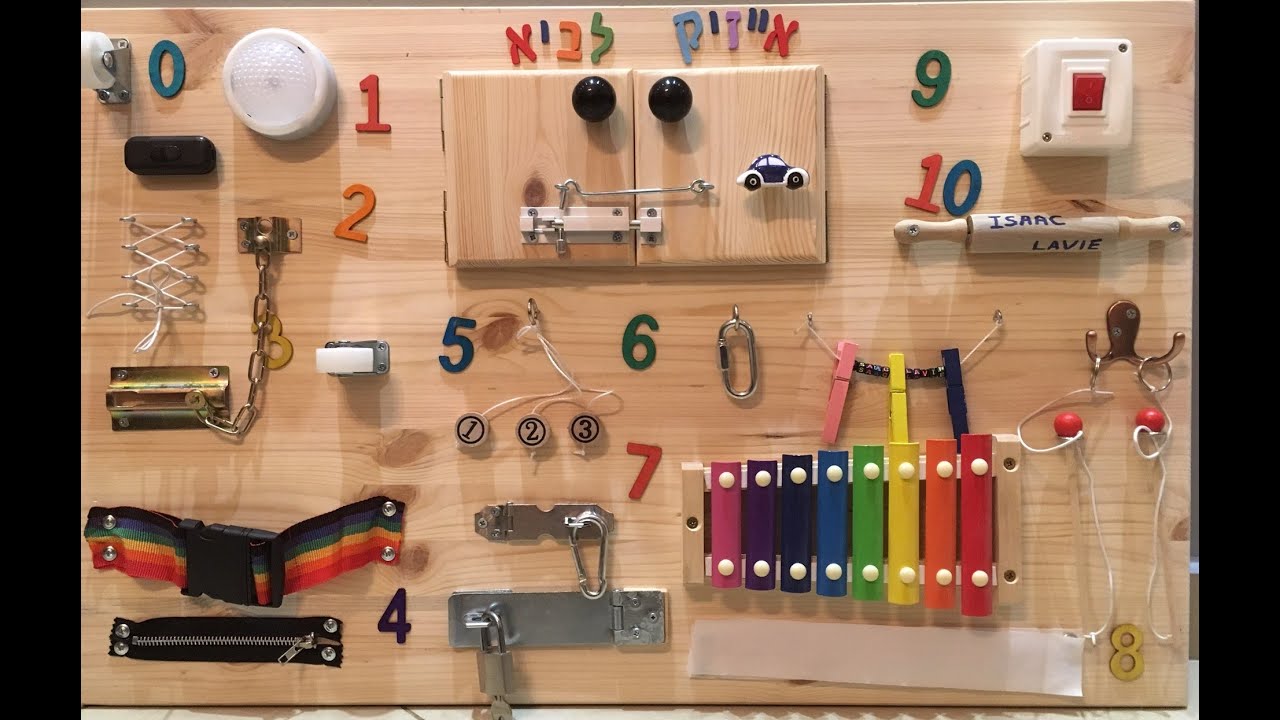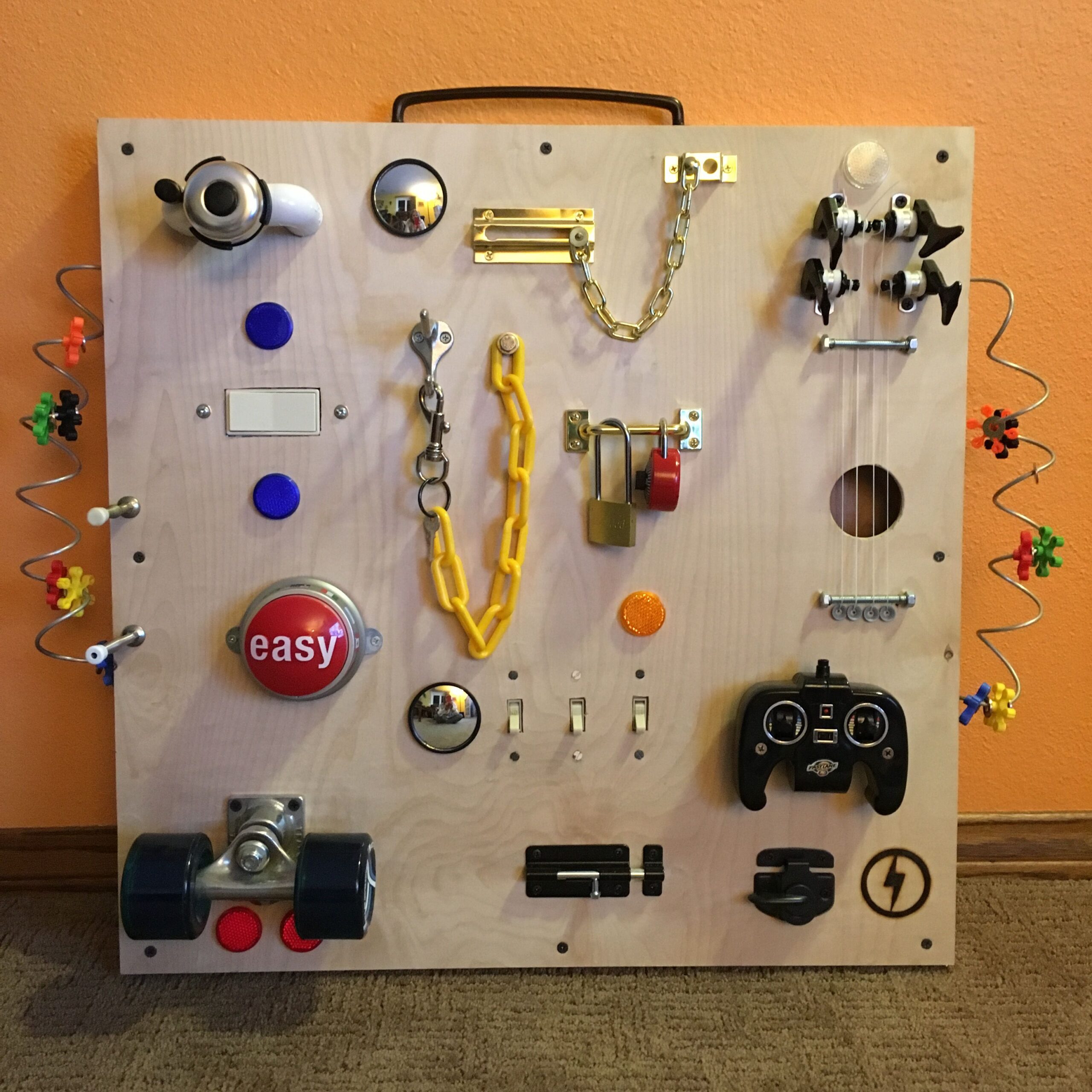Blog
Easy DIY Busy Board Ideas for Engaging Playtime
Hey there, fellow parents and caregivers! If you’re anything like me, you’re always on the lookout for fun and engaging activities to keep your little ones entertained. Between the endless requests for snacks and the classic “I’m bored!” complaints, it can sometimes feel like a Herculean task to keep kids busy. Enter the magical world of busy boards! These interactive, sensory-rich boards are perfect for sparking creativity and keeping those tiny hands occupied. Plus, they’re super easy to make at home!
So, grab your craft supplies, and let’s dive into some easy DIY busy board ideas that will not only keep your kiddos engaged but also help them develop important skills along the way.

What is a Busy Board?
Before we jump into the DIY fun, let’s quickly chat about what a busy board actually is. A busy board (also known as a sensory board or activity board) is a flat surface filled with various objects for children to touch, manipulate, and explore. Think of it as a mini playground for their hands! These boards can include buttons, zippers, locks, laces, and all sorts of other sensory-rich items that encourage curiosity and fine motor skills.
Why Make a Busy Board?
You might be wondering, “Why should I make a busy board when I can just buy one?” Well, here are a few reasons to consider going the DIY route:
- Customization: You can tailor the board to your child’s interests and developmental needs. Love dinosaurs? Throw in some dino-themed elements! Obsessed with colors? Incorporate bright, colorful objects!
- Budget-Friendly: DIY busy boards can be made using items you already have at home or can find at your local dollar store. No need to break the bank!
- Quality Time: Making a busy board can be a fun project to do with your child. It’s a great opportunity for bonding and creativity.
- Learning Opportunity: As you create the board, you can discuss different textures, colors, and functions of the items you’re using, making it a learning experience as well.
Getting Started: Materials You’ll Need
Before we jump into the ideas, let’s gather some materials. Here’s a basic list to get you started:
- Baseboard: A piece of wood, cardboard, or a sturdy poster board.
- Glue: Hot glue or strong craft glue works best for securing items.
- Screws and washers: For attaching larger items.
- Paint or contact paper: To decorate the baseboard.
- Various objects: Think buttons, zippers, laces, locks, wheels, mirrors, and more!
Easy DIY Busy Board Ideas
Now that we have our materials ready, let’s explore some fun and easy busy board ideas!
- Colorful Button Board
Buttons are a fantastic addition to any busy board. They come in all shapes, sizes, and colors, making them visually appealing and fun to manipulate.
How to Make It:
- Use a piece of wood or sturdy cardboard as your base.
- Glue a variety of buttons in different colors and sizes onto the board.
- For added fun, create a button sorting game by labeling sections with colors or numbers.

- Zipper Fun
Zippers are not just for clothes! They provide excellent tactile stimulation and can help little ones practice their fine motor skills.
How to Make It:
- Attach several zippers of different sizes to the board.
- You can also add fabric pieces or pockets at the end of each zipper for added engagement.
- Encourage your child to zip and unzip them, talking about the concept of open and close.
- Lock and Key Challenge
Kids love playing with locks! This activity helps develop problem-solving skills and hand-eye coordination.
How to Make It:
- Secure a few different types of locks onto the board (padlocks, combination locks, etc.).
- Attach the corresponding keys nearby, or create a simple keyhole using cardboard.
- Let your child experiment with unlocking and locking them, discussing how each lock works.
- Mirror, Mirror on the Board
Mirrors are fascinating for babies and toddlers. They love to see their reflections, and it can also encourage self-recognition.
How to Make It:
- Attach a small, shatterproof mirror to the board.
- Surround it with colorful stickers or shapes to make it visually appealing.
- Use this opportunity to talk about facial expressions and emotions as they look at themselves!
- Sensory Textures
Incorporating different textures can provide a rich sensory experience for your child.
How to Make It:
- Collect various materials like sandpaper, felt, bubble wrap, and soft fabric.
- Attach them to the board in different sections.
- Encourage your child to explore the textures, describing how each one feels.

- Lacing and Beading Station
Lacing activities are fantastic for improving fine motor skills and hand-eye coordination.
How to Make It:
- Drill holes into a piece of wood or use a sturdy cardboard base.
- Provide shoelaces or thick yarn along with beads or pasta shapes to lace through the holes.
- Create patterns or encourage your child to make their own designs.
- Wheels on the Board
Wheels are not just for cars! They offer great opportunities for imaginative play and can help develop motor skills.
How to Make It:
- Attach various wheels (from toy cars, old bicycle wheels, etc.) to the board.
- Create a small “road” using tape or paint for your child to roll the wheels on.
- Encourage storytelling as they play, imagining where the wheels are taking them!
Final Touches
Once you’ve created your busy board, don’t forget to personalize it! Add your child’s name, decorate it with stickers, or paint fun designs around the edges. Make it a piece of art that they can be proud of!
>>>Read more: Choosing the Perfect Wooden Board for Your DIY Busy Board
Conclusion
There you have it—some easy DIY busy board ideas that are sure to keep your little ones entertained and engaged. Not only are these boards a fantastic way to promote learning and development, but they also provide hours of fun. So, gather your materials, unleash your creativity, and get ready for some engaging playtime!
Remember, the best part about busy boards is that they can evolve with your child’s interests and skills. As they grow, you can swap out items or add new challenges to keep things fresh and exciting. Happy crafting, and here’s to many fun-filled play sessions ahead!
